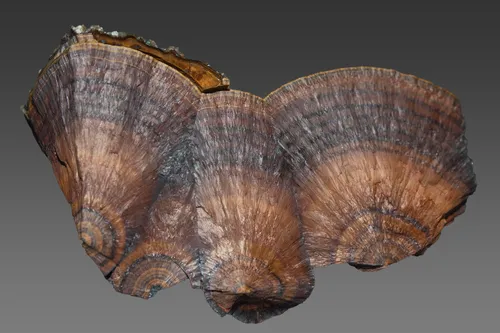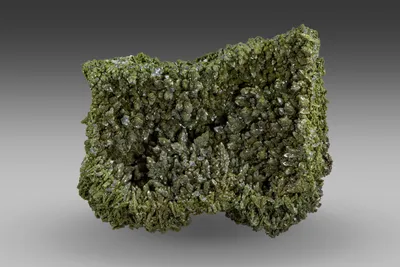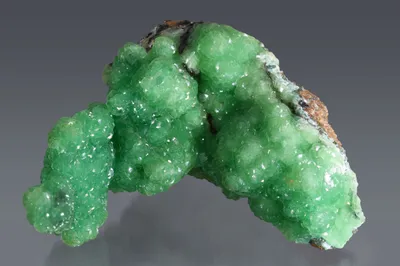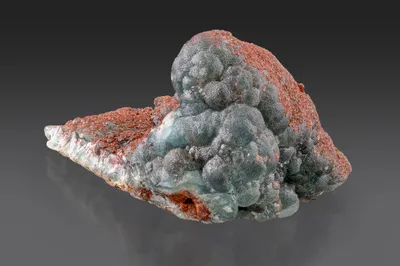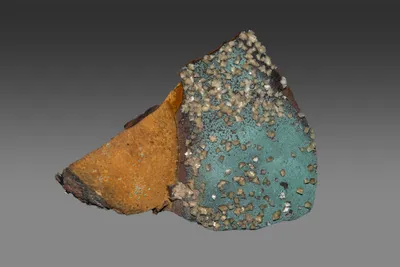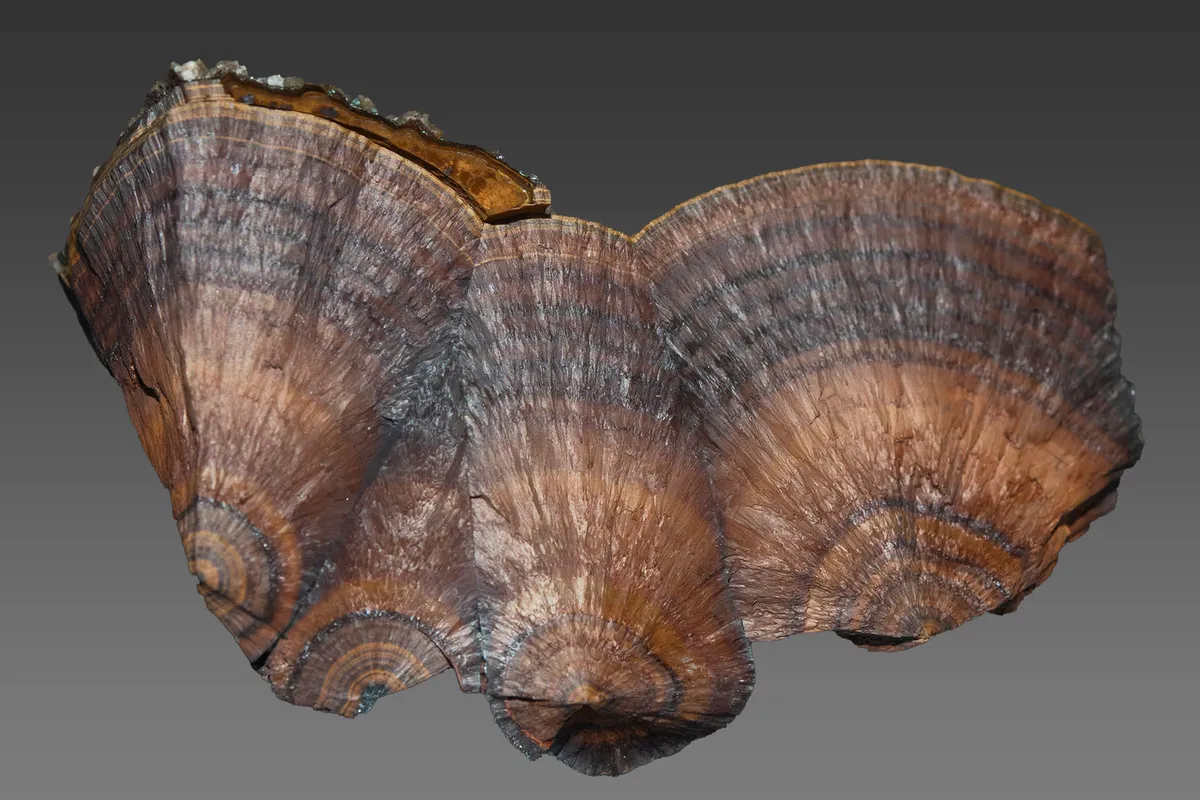
Image Credit: Malcolm Southwood
Mineral Species
Goethite
Type Locality
No
Composition
FeO(OH)
Crystal System
Orthorhombic
Status at Tsumeb
Confirmed
Abundance
Common
Distribution
First, second and third oxidation zones
Paragenesis
Supergene
Entry Number
Species; TSNB151
General Notes
Goethite is by far the most abundant secondary iron mineral at Tsumeb, although its generally indifferent aesthetics resulted in few specimens being preserved. Nevertheless, careful examination of specimens of secondary mineral assemblages from Tsumeb commonly reveals the presence of goethite as an accessory phase which, typically, sits early in the supergene paragenesis.
By the standards of most base metal sulphide deposits, Tsumeb is somewhat iron-deficient. Lombaard et al. (1986) record that run-of-mill ore at Tsumeb averaged only 1.5 wt % iron during the period 1964-1974. The main hypogene carriers of iron are pyrite (FeS) and bornite (Cu5FeS4); chalcopyrite (CuFeS2) also contains essential iron but is present in very subordinate quantities. However, significant iron tenor occurs in tennantite (0.85 % Fe) and sphalerite (0.17 – 4.6 % Fe) and these two sulphides are volumetrically significant.
The chemistry of goethite formation from the oxidation of iron-bearing sulphide minerals can be simplified as follows (taking the oxidation of chalcopyrite as an example, after Bridges 2015):
4CuFeS2(s) + 17O2(g) + 6H2O(l) >> 4Cu2+(aq) + 4SO42-(aq) + 4FeO(OH)(s) + 4H2SO4(aq)
(chalcopyrite) (goethite)
Iron (III) species are generally rather insoluble in water unless at unusually low pH values (Williams 1990). Therefore goethite (including various precursor phases) precipitates very quickly to form the principal iron-containing product of sulphide oxidation, which accounts for its significant presence in all three oxidation zones at Tsumeb.
The presence of goethite (perhaps identified simply as "gossan", or "limonite") must have been noted by the earliest explorers and miners at Tsumeb and yet the mineral receives almost no attention in the early literature and scant commentary by more recent authors. The reasons for this are not entirely clear.
Klein (1938) made a passing reference to the occurrence of cuprite mixed with limonite in the upper levels of the mine. Strunz et al. (1958a) made no mention of secondary iron oxide minerals in the first oxidation zone but refers to "… a little limonite" in the second. Strunz and Tennyson (1967), however, refer to "limonite" in both oxidation zones. These appear to be the earliest formal literature references to secondary iron oxides at Tsumeb.
Geier (1973-1974) went a little further in noting the presence of both goethite and lepidocrocite as the main iron oxides formed from oxidation of the sulphide ores, and Bartelke (1976) considered goethite to be abundant and forming light brown velvety crusts of needle-like crystals. Bartelke (1976) also cited an unpublished TCL report from 1973 stating that lepidocrocite intergrown with goethite "… forms the basis of limonite", indicating some context for the use of "limonite" in other contemporary references on Tsumeb mineralogy such as Strunz and Tennyson (1967).
Even Lombaard et al. (1986), who produced arguably the most comprehensive account of the Tsumeb geology, failed to mention goethite in their description of "Secondary Ores", although they recorded goethite as a "moderately common" mineral in their appended list of species.
Pinch and Wilson (1977) reported that goethite "Forms yellowish brown, earthy masses and scales and also forms bright brown velvety crusts of fine acicular crystals. It is usually a component of "limonite", a mixture of goethite and lepidocrocite."
Keller (1977a) noted that goethite tends to form early in the supergene process. He included it in three of his "Type I" parageneses (i.e., associations forming under relatively high pH conditions):
I/1: goethite >> duftite (i) >> cerussite >> duftite (ii) >> dolomite
I/4: goethite >> wulfenite >> mimetite >> malachite
I/5: [hematite + goethite] >> wulfenite (i) >> duftite >> calcite >> wulfenite (ii)
Keller (1984) described goethite (and its polymorph lepidocrocite) as components of dense to porous masses of limonite and occurring as velvety covering of fine fibres or acicular crystals. He noted mimetite and wulfenite as particularly common associates.
Gebhard (1999) recalled that:
"In 1994, botryoidal aggregates [of goethite] found on the 46 level displaying a radiating structure, formed attractive specimens up to 30 cm diameter. This ‘kidney ore’ contained specks of malachite on the surface."
A specimen broadly fitting this description in the Feinglos Collection (MGMH 2022.4.6348L) was obtained by Feinglos from Charlie Key in 1995 and is attributed to 45 Level. Isolated, saddle-shaped rhombs of dolomite are present on some of the goethite surfaces and the tiny malachite crystals are pseudomorphous after cuprite.
Von Bezing et al. (2016) noted merely that "… masses of reniform goethite" occurred at Tsumeb, citing a 2005 personal communication from the late Claus Hedegaard.
Associated Minerals
adamite; anglesite; arsendescloizite; arseniosiderite; arsenohopeite; azurite; bayldonite; calcite; calvertite; cerussite; conichalcite; copper; cuprite; dioptase; dolomite; duftite; feinglosite; gallobeudantite; hemimorphite; hydrocerussite; jamesite; kasolite; kintoreite (?); lanarkite (?); lepidocrocite (?); malachite; mimetite; minrecordite; molybdenite; mottramite; ojuelaite; quartz; renierite; schneiderhöhnite; smithsonite; stolzite; surite (?); tsumcorite; willemite; wulfenite; zincolivenite
Pseudomorphs
Goethite is reported to form pseudomorphs after the following minerals: schultenite (rare).
